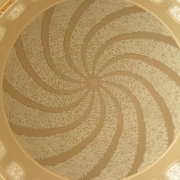The Brain and the Making of the Modern Mind, Renovatio, Spring
Few today would deny that the brain holds a preeminent place in the scientific imagination. In modern science, the brain is often seen as the organ of consciousness, thought, and identity. This view, rooted in neuroscience, psychology, and cognitive science, suggests that who we are —our emotions, memories, imagination, and even sense of free will—is fundamentally tied to and determined by the brain’s structure and function. With the rise of brain imaging (e.g., functional MRI and electroencephalograms), neuroplasticity research, and artificial intelligence (AI), the brain has become a new frontier for exploration. Neuroscientific breakthroughs have fueled speculation about everything from mind uploading to brain-machine interfaces, reinforcing the brain’s essential role in discussions about human potential and limitations.
Yet as Matthew Cobb’s illuminating The Idea of the Brain: The Past and Future of Neuroscience demonstrates, despite centuries of scientific inquiry, our understanding of the brain remains remarkably limited. The more we learn, the more the brain’s complexity defies reductive explanations. While we have built a solid foundation in neurophysiology, we still lack a clear understanding of how neurons—whether billions, millions, or thousands—interact to generate brain activity. To be sure, we know that the brain interacts with the world and the body, processing stimuli through both innate and learned neural networks. It predicts changes in stimuli to prepare appropriate responses and coordinates bodily actions through intricate neuronal connections and chemical signaling. Yet when it comes to truly grasping how neural networks operate at a cellular level or accurately predicting the effects of changes in their activity, we are still in the early days of neuroscience. For instance, while scientists can artificially induce visual perception in a mouse by replicating a specific pattern of neuronal activity, they do not yet fully understand how and why visual perception generates that pattern in the first plac









